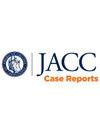Reversed Potts Shunt and Venopulmonary Extracorporeal Membrane Oxygenation Support in Sustained Pulmonary Hypertension Crisis
Q4 Medicine
引用次数: 0
Abstract
Background
Infantile idiopathic pulmonary arterial hypertension complicated by recurrent episodes of pulmonary hypertensive crisis is an extremely rare and critical condition with high mortality.
Case Summary
We present the case of a 5-month-old infant with a pulmonary hypertension crisis refractory to medical therapy, who underwent successful treatment with an emergency reversed Potts shunt (RPS), along with postoperative venopulmonary extracorporeal membrane oxygenation (V-P ECMO) support.
Discussion
From an imaging perspective, the mechanism by which RPS improves symptoms in patient with sustained pulmonary hypertension crises is explained. Additionally, this is the first reported case of successful postoperative use of V-P ECMO support after RPS.
Take-Home Messages
It is important to recognize the importance of RPS and V-P ECMO in the treatment of pulmonary hypertension crises. By comparing pre- and postoperative imaging data, the mechanism by which RPS improves cardiac function is better understood.
持续性肺动脉高压危重症的反向Potts分流和静脉体外膜氧合支持
背景:原发性特发性肺动脉高压合并肺动脉高压危象复发是一种极为罕见且死亡率高的危重疾病。我们报告了一例5个月大的婴儿肺动脉高压危象,药物治疗难治性,他接受了紧急反向Potts分流术(RPS)和术后静脉肺体外膜氧合(V-P ECMO)支持的成功治疗。从影像学角度解释RPS改善持续性肺动脉高压危象患者症状的机制。此外,这是首次报道的RPS后成功使用V-P ECMO支持的病例。认识到RPS和V-P ECMO在肺动脉高压危象治疗中的重要性是很重要的。通过比较术前和术后的影像资料,可以更好地了解RPS改善心功能的机制。
本文章由计算机程序翻译,如有差异,请以英文原文为准。
求助全文
约1分钟内获得全文
求助全文
来源期刊

JACC. Case reports
Medicine-Cardiology and Cardiovascular Medicine
CiteScore
1.30
自引率
0.00%
发文量
404
审稿时长
17 weeks
 求助内容:
求助内容: 应助结果提醒方式:
应助结果提醒方式:


